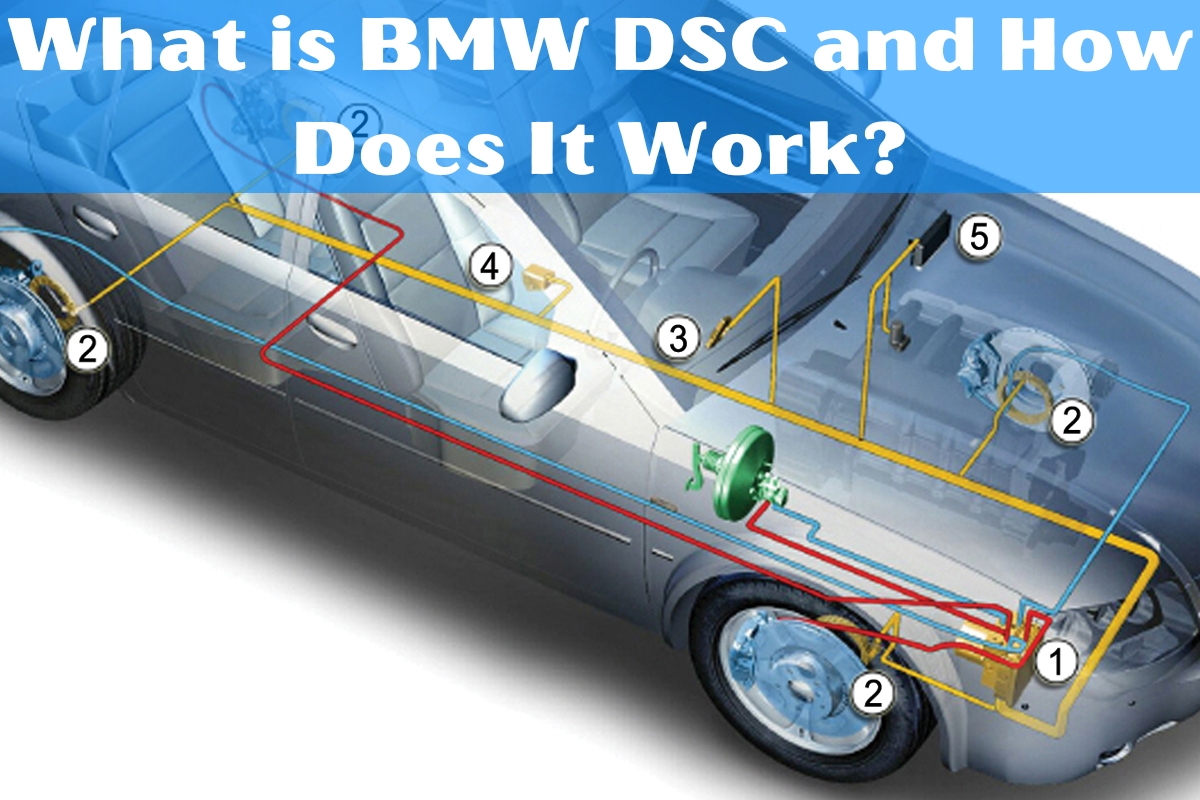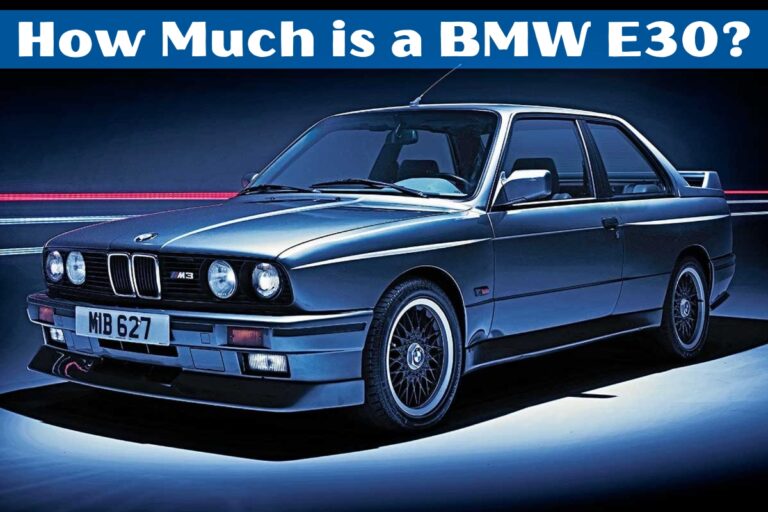What is BMW DSC and How Does It Work?

If you own a BMW, you may have heard of the term “DSC” and wondered what it means. DSC stands for Dynamic Stability Control, and it’s an advanced safety system designed to help prevent skidding and improve vehicle control in various driving conditions. In this comprehensive guide, we’ll dive deep into understanding what BMW DSC is, how it works, and its benefits.
What is Dynamic Stability Control (DSC) in BMWs?
Dynamic Stability Control (DSC) is a cutting-edge system that integrates several safety features, including anti-lock braking (ABS), traction control, and stability control. The primary purpose of DSC is to enhance vehicle stability and maximize traction, especially during acceleration or when navigating corners.
How Does BMW’s DSC System Work?
The DSC system in BMWs relies on a series of sensors that continuously monitor various factors, such as:
- Steering angle
- Vehicle speed
- Lateral acceleration (side-to-side movement)
- Yaw rate (rotational movement around the vertical axis)
- Wheel speed
These sensors feed real-time data to the DSC control module, which analyzes the information and compares it to the driver’s intended course. If the system detects a potential loss of traction or stability, it can take corrective action by:
- Reducing engine power
- Applying brakes to individual wheels
- Adjusting the engine’s throttle position
By intervening in this manner, the DSC system helps maintain control and prevents the vehicle from spinning out or skidding off the road.
The Benefits of BMW’s Dynamic Stability Control
BMW’s DSC system offers several advantages that contribute to a safer and more enjoyable driving experience:
Improved Traction and Stability
The primary benefit of DSC is enhanced traction and stability, especially in challenging driving conditions like wet or icy roads, loose gravel, or during sudden maneuvers. By continuously monitoring the vehicle’s behavior and adjusting accordingly, DSC helps the driver maintain control and avoid potential accidents.
Increased Confidence and Driving Pleasure
With DSC working in the background, BMW drivers can enjoy a more confident and exhilarating driving experience. The system allows for a more dynamic driving style, knowing that it will intervene if necessary to prevent loss of control.
Tailored Driving Modes
Most BMW models offer different DSC modes to suit various driving preferences and conditions:
- Normal Mode: DSC is fully engaged, providing maximum stability and traction control.
- DTC (Dynamic Traction Control) Mode: Activated by pressing the DSC button once, this mode allows for slightly more wheel slip, enabling a more spirited driving style while still maintaining stability control.
- DSC Off Mode: By holding the DSC button for a few seconds, the system is deactivated, giving the driver full control over the vehicle’s dynamics. This mode is recommended only for experienced drivers in controlled environments, such as on a racetrack.
When Should You Use or Disable DSC?
While the DSC system is designed to enhance safety, there may be situations where disabling it temporarily is necessary or desirable:
Off-Road or Loose Terrain
When driving on loose surfaces like gravel or sand, a certain amount of wheel slip can be beneficial for maintaining traction. In these cases, enabling DTC mode or temporarily disabling DSC can help the wheels regain traction more effectively.
Performance Driving or Track Use
Experienced drivers may prefer to disable DSC when participating in performance driving events or on a racetrack, where they want complete control over the vehicle’s dynamics and the ability to induce controlled drifts or slides.
Snow or Ice
In snowy or icy conditions, the DTC mode can be useful, as it allows for a slight amount of wheel slip, which can help the vehicle maintain forward momentum and traction.
It’s important to note that disabling DSC should only be done by experienced drivers in controlled environments, as it removes the system’s safety interventions and increases the risk of losing control.
DSC Warning Signs and Maintenance
Like any complex system, the DSC in BMWs may occasionally experience issues or need maintenance. Here are some common warning signs to watch out for:
- The DSC warning light illuminates on the dashboard
- The vehicle exhibits unexpected behavior or instability during cornering or sudden maneuvers
- Unexplained changes in speed or traction
If you notice any of these warning signs, it’s crucial to have your BMW inspected by a qualified technician as soon as possible. Potential causes of DSC failure include:
- Faulty sensors or sensor connections
- Issues with the hydraulic pump or other system components
- Low brake fluid levels
Regular maintenance and timely repairs can help ensure the DSC system continues to function correctly and provide the safety benefits it was designed for.
The Evolution of BMW’s DSC System
While the core principles of DSC have remained consistent over the years, BMW has continuously refined and improved the system to keep up with advancements in technology and driving dynamics. The latest iteration, DSC III, offers even more precise and responsive control, thanks to enhanced sensors and algorithms.
One notable improvement is the integration of Dynamic Traction Control (DTC) mode, which allows for a more dynamic driving experience by permitting a controlled amount of wheel slip. This mode strikes a balance between performance and stability, catering to enthusiasts who desire a more engaging drive while still benefiting from the safety net provided by DSC.
Additionally, modern DSC systems can communicate with other vehicle systems, such as the navigation and infotainment systems, to provide real-time information and warnings based on road conditions, upcoming turns, or potential hazards.
DSC and Other Driver Assistance Technologies
BMW’s DSC system is just one component of the brand’s comprehensive suite of driver assistance technologies. It works in tandem with other systems to provide a truly integrated and intelligent driving experience.
For example, the Dynamic Brake Control (DBC) system works closely with DSC to optimize brake pressure distribution and ensure maximum braking performance, even in challenging situations like emergency stops or on slippery surfaces.
Furthermore, DSC collaborates with Active Steering and Integral Active Steering systems to enhance the vehicle’s agility and responsiveness, particularly during high-speed maneuvers or sudden avoidance scenarios.
DSC and Autonomous Driving
As the automotive industry continues to evolve towards increased automation and autonomy, systems like DSC will play a crucial role in ensuring the safe operation of self-driving vehicles. By constantly monitoring and adjusting vehicle dynamics, DSC can help mitigate potential hazards and maintain control in unexpected situations, even when the vehicle is operating in autonomous mode.
Conclusion
BMW’s Dynamic Stability Control (DSC) is a remarkable feat of engineering that exemplifies the brand’s commitment to safety, performance, and innovation. By seamlessly integrating various technologies, DSC provides an invisible safety net that enhances vehicle control and stability, giving drivers the confidence to enjoy every drive to the fullest.
Whether you’re a seasoned enthusiast or a newcomer to the world of BMW, understanding the capabilities and nuances of DSC can help you make the most of your vehicle’s performance potential while prioritizing safety. As technology continues to evolve, you can expect BMW to remain at the forefront, continuously refining and improving systems like DSC to deliver an unparalleled driving experience.






